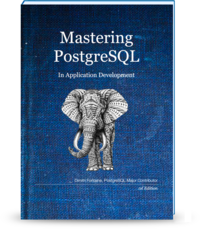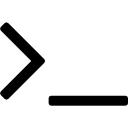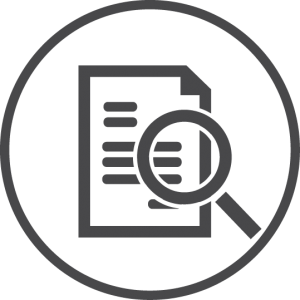It seems to be usual nowadays to review the previous year, and readers apparently like Top-N Lists — that’s you now, so let’s hope that my understanding works with you too.
Of course 2018 will see its own amount of new and original content added to this blog, with a continuous focus towards how to make the best out of the SQL powerful programming language, and its advanced concurrency semantics.
Also, now that I work at Citus Data and contribute to their Open Source products, the scaling-out angle might make some appearances too.
So, here is the Top 8 Articles of 2017 on http://tapoueh.org in terms of visits to this website’s pages:
Table of Contents
Understanding Window Functions
This seems more like the all-time favorite article on this website really. It’s a practical introduction to the matter of window functions, using a real-world dataset that is available freely.
To have a complete and thorough understanding of Window Functions, consider reading Bruce Momjian’s excellent slide deck Postgres Window Magic!
Or even watch it in video here:

There was SQL before window functions and SQL after window functions: that’s how powerful this tool is. Being that of a deal breaker unfortunately means that it can be quite hard to grasp the feature. This article aims at making it crystal clear so that you can begin using it today and are able to reason about it and recognize cases where you want to be using window functions.
PostgreSQL, Aggregates and Histograms
Only second to the Window Functions article from 2013 is the Histogram article from 2014, another big classic of this website. The article shows how to have some fun with PostgreSQL and draw plots directly in the console, no less!

In our previous article Aggregating NBA data, PostgreSQL vs MongoDB we spent time comparing the pretty new MongoDB Aggregation Framework with the decades old SQL aggregates. Today, let’s showcase more of those SQL aggregates, producing a nice histogram right from our SQL console.
In the article you will learn how to produce this kind of chart right in your console while exploring a dataset:
bucket | range | freq | bar
--------+---------+-------+--------------------------------
1 | [10,15) | 52 |
2 | [15,20) | 1363 | ■■
3 | [20,25) | 8832 | ■■■■■■■■■■■■■
4 | [25,30) | 20917 | ■■■■■■■■■■■■■■■■■■■■■■■■■■■■■■
5 | [30,35) | 20681 | ■■■■■■■■■■■■■■■■■■■■■■■■■■■■■■
6 | [35,40) | 9166 | ■■■■■■■■■■■■■
7 | [40,45) | 2093 | ■■■
8 | [45,50) | 247 |
9 | [50,54) | 20 |
10 | [54,55) | 1 |
(10 rows)
Time: 53.570 ms
SQL and Business Logic
This one makes it in second position, which is quite impressive. Well my understanding is that this is a big and complex topic on which many people have many different opinions. Allow me to share mine!

Business logic is supposed to be the part of the application where you deal with customer or user facing decisions and computations. It is often argued that this part should be well separated from the rest of the technical infrastructure of your code.
Of course, SQL and relational database design is meant to support your business cases (or user stories), so then we can ask ourselves if SQL should be part of your business logic implementation.
Or actually, how much of your business logic should be SQL?
How to Write SQL
Now that you want to use SQL more in your application, how actually would you do that? It’s possible to find tooling that have been designed to answer exactly that question, and that allow a developer to deal with
.sqlfiles in their repositories. That’s pretty neat!

Kris Jenkins cooked up a very nice way
to embed SQL in your
code: YeSQL for Clojure. The main
idea is that you should be writing your SQL queries in .sql files in your
code repository and maintain them there.
The idea is very good and it is now possible to find alternative implementations of the Clojure yesql library in other languages. Today, we are going to have a look at one of them for the python programming language: anosql.
Mastering PostgreSQL in Application Development
This summer, I wrote a book! In its pages, I share my knowledge of SQL with application developers, and we study ways to answer simple to advanced business questions — each time within a single SQL query.
The book has been a continued success to unexpected degrees! Thanks to everyone buying and reading it, and also to a few of the readers sharing some feedback about the content in there. I’m still almost as excited as on the book’s release date!

Mastering PostgreSQL in Application Development targets application developers who want to learn SQL properly, and actually master this programming language. Most developers don’t think of SQL as a programming language, mainly because they don’t have full control of the execution plan of their queries.
Setting up psql, the PostgreSQL CLI
New users of PostgreSQL are confronted with using
psql, our beloved Command-Line Application. Some of them don’t readily appreciate how powerful this environment can be when setup properly, with interactive query editing done using your prefered editor, for instance.Not too surprisingly, this article have reached quite a good success on the blog. Also, the content comes straight from my book Mastering PostgreSQL in Application Development!

PostgreSQL ships with an interactive console with the command line tool named psql. It can be used both for scripting and interactive usage and is moreover quite a powerful tool. Interactive features includes autocompletion, readline support (history searches, modern keyboard movements, etc), input and output redirection, formatted output, and more.
Exploring a Data Set in SQL
If there’s an article full of SQL query text and example on this http://tapoueh.org website, this is the one! Well apart from on JSON and SQL maybe — which made it to number 12 on that Top list — no other article goes that deep into real world SQL sample queries.

Sometimes you need to dive in an existing data set that you know very little about. Let’s say we’ve been lucky to have had a high level description of the business case covered by a database, and then access to it. Our next step is figuring out data organisation, content and quality. Our tool box: the world’s most advanced open source database, PostgreSQL, and its Structured Query Language, SQL.
PostgreSQL and the calendar
Dealing with time is a political activity more so than an engineering occupation these days, with time zone handling and tracking being so very complex in many subtle ways. No wonder then that this entry made it to our Top list of 2017!

The modern calendar is a trap for the young engineer’s mind. We deal with the calendar on a daily basis and until exposed to its insanity it’s rather common to think that calendar based computations are easy. That’s until you’ve tried to do it once. A very good read about how the current calendar came to be the way it is now is Erik’s Naggum The Long, Painful History of Time.
